5 Plants Toxic to Horses: What To Know and How to Protect Your Horse
Arvydas Lakacauskas/iStock / Getty Images Plus via Getty Images
Horses are very inquisitive by nature and can be exposed to toxic plants in a variety of ways. Some toxic plants are quite tasty, and your horse may eat them even if good-quality feed is also available.
Other toxic plants aren’t as appetizing, and horses will only eat them as a last resort when other food sources are not accessible.
Sometimes toxic plants can be unintentionally mixed into hay fed to horses, leading to accidental poisoning.
If your horse ingests a toxic plant, a variety of symptoms can occur, depending on the plant ingested.
Horses may also incidentally eat leaves or seeds from toxic trees or ornamental plant clippings that fall into the pasture.
Different plants can cause different symptoms, so knowing which plants your horse has access to is important in case they accidentally consume some.
We’ll discuss the most common plants toxic to horses, what common symptoms look like if ingested, and what to do if your horse accidentally ingests one.
What Plants Are Toxic to Horses?
Many plants are toxic to horses, but a few of the most commonly encountered include oleander, red maple, yew, hoary alyssum, and box elder trees.
5 Plants That are Toxic to Horses
1. Oleander: Oleander is an evergreen shrub, and if you live in the Southern or Western United States, including California, Arizona, New Mexico, and Texas, you may have this plant in your backyard.
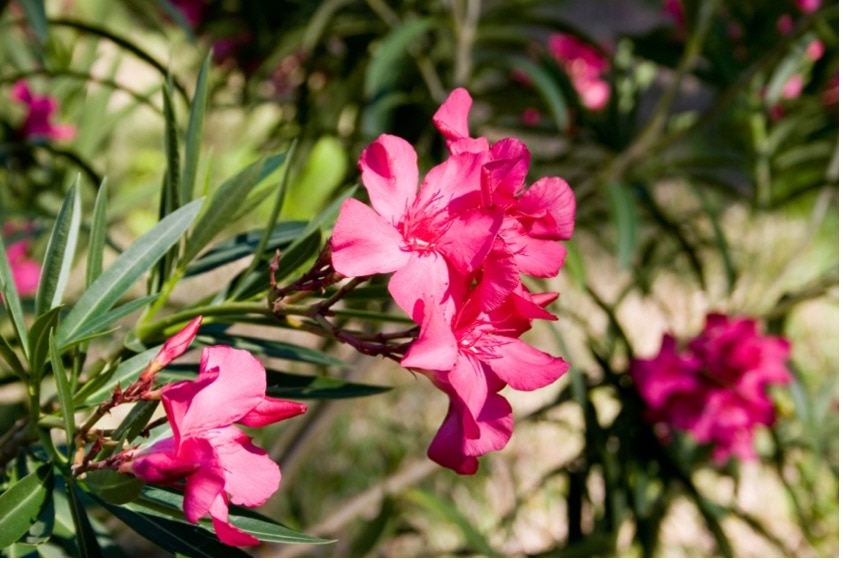
Oleander plants affect the heart and can lead to a decreased heart rate, abnormal heart rhythm, and even sudden death.
Signs of poisoning can develop from 30 minutes to a few hours after exposure.
2. Red maple: Red maple trees are found throughout the Eastern United States from Canada to Florida, and as far west as Texas.
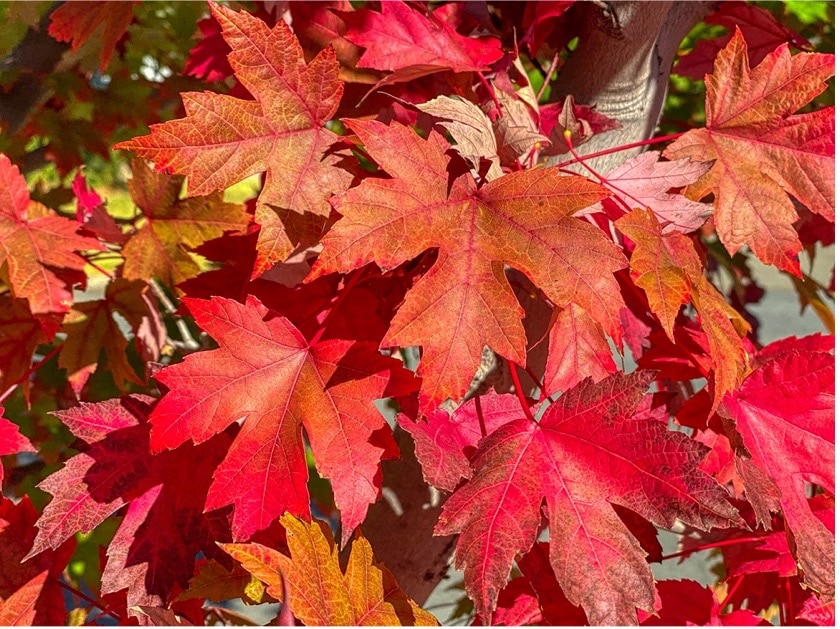
Ingestion by a horse typically happens in the fall, but may occur in the spring or summer when horses have access to wilted or dried leaves.
If your horse eats the wilted or dried leaves of a red maple tree, it can cause damage to red blood cells and lead to anemia.
Clinical signs that can result include decreased energy levels, decreased appetite, changes in breathing, and abnormal urine color.
Your horse can develop symptoms as soon as 12–48 hours after exposure; however, the symptoms can sometimes be delayed up to five days.
3. Yew: Yews are evergreen trees and shrubs that grow throughout the Northern Hemisphere, and they are common ornamental plants throughout the United States.
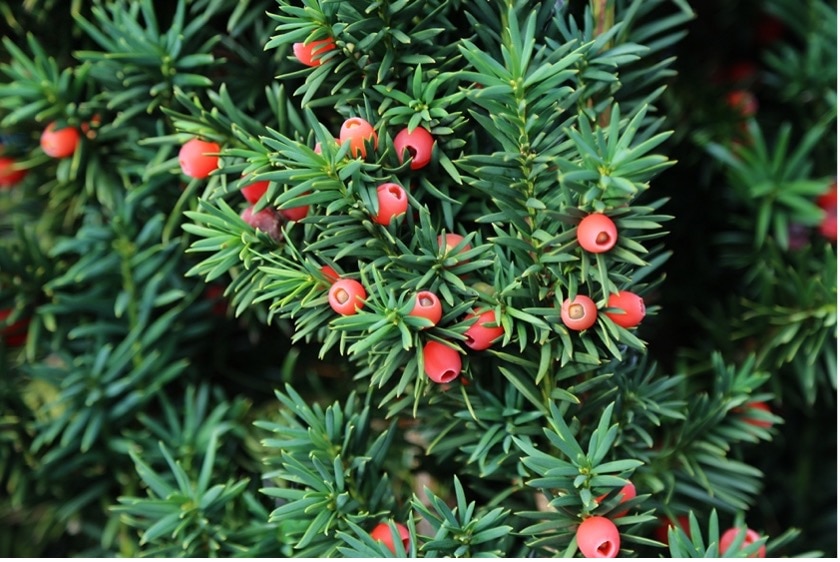
- This is another plant that affects the heart of horses and can cause a decreased heart rate and abnormal heart rhythm.
- If ingested by your horse, this plant can cause symptoms quite rapidly, and unfortunately, most affected horses are found already dead.
4. Hoary alyssum: Hoary alyssum is a weed that grows well in areas with cold winters and hot, dry summers; it can be found in the Northeastern and North-Central United States and Canada.
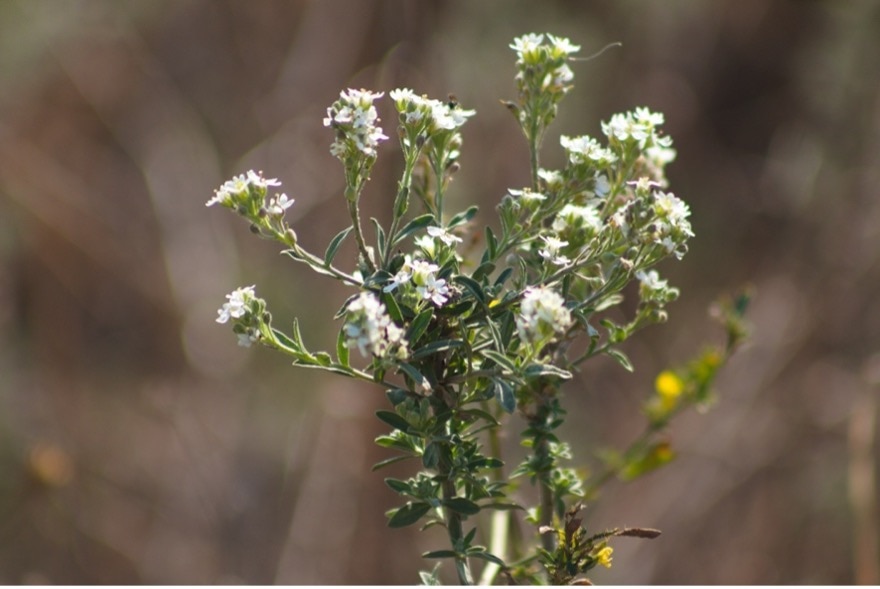
- If your horse ingests this plant, you may see symptoms such as swelling of their legs, fever, and laminitis, a painful foot condition. Symptoms can develop within 12–24 hours after ingesting the plant and can last two to four days after treatment or removal of the plant.
5. Box elder trees: The box elder tree is a type of maple that grows in low, moist areas throughout the Midwest and Eastern United States and Canada.
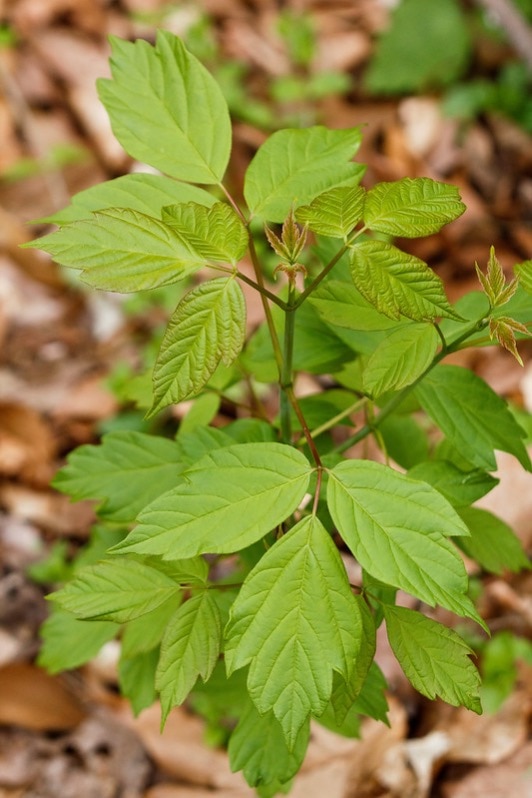
- Their winged seeds cause severe illness when eaten by horses and can lead to symptoms such as muscle stiffness, difficulty walking, and dark urine, which can develop within 12-24 hours. This plant can be fatal in as little as three days after being eaten by a horse.
If your horse ingests any of the above plants, contact your veterinarian immediately. While your vet is on their way, you can also reach out to Pet Poison Helpline at 855-764-7661 to determine the type of plant (if unknown) and receive any immediate instructions necessary prior to your vet's arrival.
Symptoms of Plant Poisoning in Horses
If your horse ingests a toxic plant, a variety of symptoms can occur, depending on the plant ingested. The clinical signs can be as subtle as mild lethargy and decreased appetite or as severe as:
Depending on the plant ingested, symptoms may develop quickly or be delayed several days after ingestion.
What To Do if Your Horse Ingests a Toxic Plant
If your horse ingests a toxic plant, it is best to contact your veterinarian and Pet Poison Helpline at 855-764-7661 to determine if the plant is toxic and if your horse needs to be seen and treated by a veterinarian immediately.
How Do Veterinarians Treat a Plant Poisoning in Horses?
Most toxic plants don’t have an antidote, so treatment focuses on decontamination, monitoring, and supportive care.
If you saw your horse ingest a toxic plant but the horse is not showing clinical signs, medical-grade activated charcoal may be administered to help prevent the absorption of toxins. Depending on the plant ingested and its toxicity, blood work and monitoring of the urine may also be recommended.
In serious cases, your horse may need fluid support, close monitoring of the heart rate and heart rhythm, and symptomatic and supportive care.
Prevention of Plant Poisoning in Horses
To prevent plant poisoning in horses, it is important to know which plants your horse has access to.
If toxic plants such as red maple, box elder trees, oleander, yew, or hoary alyssum are near the pasture your horse grazes in, those plants should be removed and raked up, or access to the areas where the plants are should be fenced off.
Clippings from toxic plants should never be disposed of in places where horses could have access to them. To ensure your horse isn’t getting into things that are dangerous to them, provide your horse with year-round good-quality, tasty forage and hay.
Sometimes toxic plants can be mixed in with hay, so buying hay from a reputable source and checking to ensure unusual plant material is not present are important steps in keeping your horse safe.
If you are unsure of the identification of the plants on your property, reach out to local garden centers or florists in your area to get the plant immediately identified.
